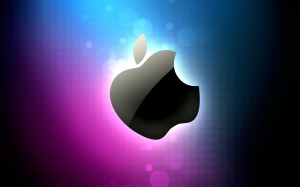If you include a very modest tweak of the Mac Pro’s specs, all of Apple’s Macs were updated in 2012, so what can we expect in 2013? Reports include a move away from Intel to ARM-based Macs, Siri and Maps integration as part of wider convergence between Apple’s desktop and mobile operating systems, and at long last a significant Mac Pro update. Other possibilities include the option of iMacs with Retina displays and Apple’s apparent plans to drop optical drives from all Macs.
iMac
The company impressed with the latest iMac updates, packing plenty of power and features into a slim form factor and futuristic design. Analysts have predicted the latest models will help reverse a drop in sales, and Apple could see an enormous 434 per cent quarter over quarter increase in desktop computer sales in the first quarter of 2013. Unfortunately, the new iMac didn’t launch until the end of November, and supply was expected to be limited, so sales of the new computers are unlikely to make a big impact in the December quarter.
Should the iMac be as popular as predicted, Apple will need to build on that success with equally impressive iMac updates in the coming years to tempt PC switchers and convince existing users to upgrade.
One suggestion is that the same stunning Retina display found on other Apple hardware may make its way to the iMac, although that depends on cost. Currently, Apple would have to charge a significant premium to offer an iMac with Retina display, especially the 27in model. Apple’s newest iMacs already have impressive displays using in-plane switching (IPS) technology and LED backlighting to reduce reflection by 75 per cent to produce strong, vivid colours, which many will be more than happy with. The company will also need to address issues surrounding the screen lamination process that requires high pressure welding, which delayed the launch of the latest iMac late in 2012. That welding technique reportedly comes from UK-based company TWI, and uses frictional heat in order to soften and merge the edges to ensure the iMac’s thinness.
MacBooks
In 2012, Apple introduced the 13in Retina display MacBook Pro, which was smaller, slimmer and lighter than previous models. It also ditched the optical drive in the process and blurred the line between the MacBook Pro and Air further. Its possible that the company will introduce an Air with a Retina display, supplies permitting, at some point this year while retaining the option of a cheaper non-Retina model, which has proved so popular. Despite Intel’s claim that 40 per cent of all laptops sold in 2012 would be ultrabooks, the most popular, mid-range priced ultra-portable notebook remained the MacBook Air, according to ABI Research.
Apple is said to be sourcing thinner components for the next generation of MacBook Airs due in 2013 in an effort to maintain a lead that saw the company take around 40 per cent of the slim notebook market in 2012. It will face stronger competition in this sector though, if Intel’s prediction of cheaper ultrabooks becomes a reality. Apple could also face further competition from Microsoft, if laptop users are tempted to upgrade to Windows 8, introduced to some acclaim in October 2012.
It’s likely that the company will continue a shift to SSD or flash storage as Apple calls it, which doesn’t employ any moving mechanical components unlike more traditional hard disk drives, to shrink MacBooks further.
Mac Pro
In recent years, many long-time Apple observers have noted that it appears to have abandoned the type of creative professionals who kept the Mac maker afloat during more difficult times.
Power-hungry users relied on the Mac Pro to get things done, but users saw only an incremental update in June 2012, with minor speed boosts for processors and increases in RAM. With no Thunderbolt or USB 3.0, the update failed to impress, and users took to Twitter and Facebook to demand Apple act. One received a response from Apple CEO Tim Cook, who in an email told concerned customer Franz: “Our Pro customers like you are really important to us Don’t worry as we’re working on something really great for later next year.” Speculation suggests a redesigned Mac Pro, new and improved Intel processors, a move away from Intel for Apple’s own chips, native SATA III/SAS connectivity, and more.
Any update will also give a hint to the future of Intel’s connection technology Thunderbolt, which Apple co-developed and has so far supported, despite an apparent less than enthusiastic response from third-party manufacturers and users. Thunderbolt allows for high-speed connection of peripherals, including hard drives, RAID’s, video-capture devices and network interfaces, all the gear Mac Pro users are likely to rely on. However, Thunderbolt devices and adapters are still relatively rare, and those that are available aren’t exactly cheap.
Intel executives meanwhile recently confirmed Thunderbolt technology won’t reach smartphones and tablets for years because of power consumption issues, which need to be resolved. While Thunderbolt and USB 3.0 are still likely options for the next Mac Pro, Apple is likely looking beyond wired solutions to connect a host of devices.
Back in October it was announced that Bob Mansfield, Apple’s senior vice president of Technologies, will lead a new group combining all of Apple’s wireless teams across the company into one organisation. As Macworld’s Dan Moren pointed out at the time, Apple’s goal is to reduce the number of cables and wires needed for its devices, while wireless technology is perhaps the most key component of Apple devices going forward. Wireless or not, if Apple does manage to produce something really great, 2013 could be the year Mac Pro fans have been waiting for some time.
The next OS
Since 2010, Apple has worked hard to bring features from iOS into OS X, making the two operating systems closer than ever and that convergence will continue as we look to OS X 10.9 and beyond. Reports suggest it will be called Lynx, although it would share its name with a well-known deodorant brand in the UK. OS X 10.9 has already been appearing in analytics logs across the web, and is expected to launch around July 2013.
Early builds reportedly show the addition of Siri voice command integration, an enhancement on the current Dictation feature found in Mountain Lion. Additionally, sources claim Apple is planning to bring its mapping service to the Mac, which would enable developers to embed maps into their Mac App Store applications using the MapKit framework.
Jonathan Ive, who now heads up Apple’s Human Interface (HI) software teams, should also have an important say in how any new OS will look. Ive and his team may clean up and refine the eclectic mix of different user interface styles. Those ornamental skeuomorphic design elements, also found in iOS, will be either refined or dumped all for a less fake and less tacky look. Ultimately, Ive could bring the same strength and consistency to Apple’s OS X and iOS, which he has brought so successfully to the company’s computers, iPods, iPhone and iPads.






